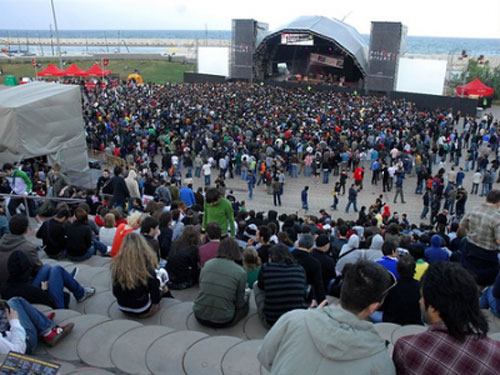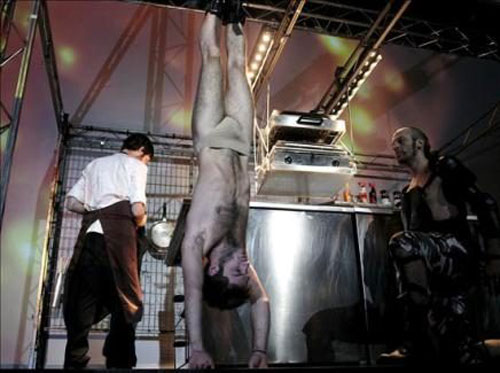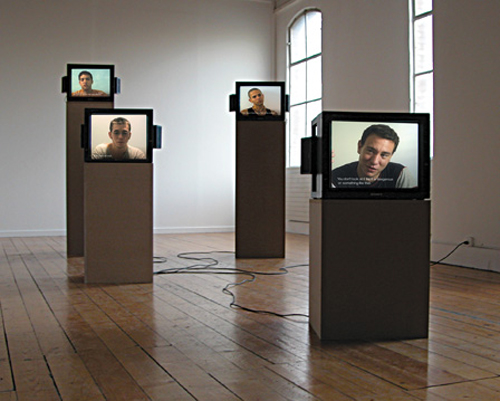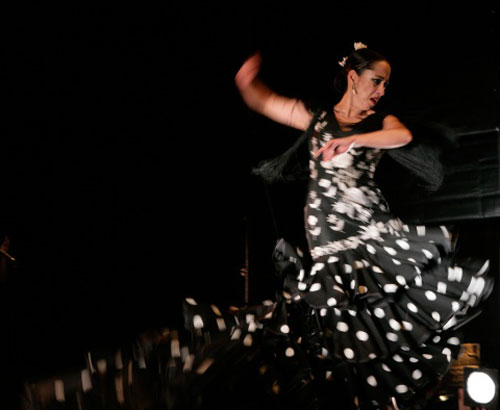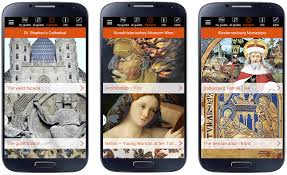Mónica Boixeda
The Castle of Montjuic, built on a mountain of Barcelona, is one of the most ancient fortifications that keeps its creative architecture.
Mónica Boixeda
Walking through the streets of Barcelona, sooner or later you´ll find some misleading signs printed in the (much) garbage of the city. You will read “Art is rubbish”, on a broken wardrobe door or on a shelf left out on the street, and maybe you´ll ask yourself, whether it is a quick idea of someone passing by or it relates specific content of an artwork, in spite of that, what does the author mean by that phrase? You won’t understand anything until you find other written sings on shelves, and more painted garbage bags in different parts of the city, then you will know that this is a specific project and wondering down the street, you will discover that the author is the Spanish artist Francisco de Pájaro (www.franciscodepajaro.net). Pajaro was born in Zafra, province of Badajoz, in 1970. His career as a painter began as an office decorator when he was just a teenager. In 1994, he joined the School of Arts and Crafts in Merida, where he studied one and half years before leaving his studies and returning to his hometown, where he began devoting himself to painting by following a surrealist and cubist inspiration, taking as references Francis Bacon and Pablo Picasso. His first solo exhibition took place in the gallery of the Caja de Ahorros de Badajoz. When his colleague and partner died in a tragic accident, he decided to leave the company “Rotuletto”(dedicated to corporate and interior design) to devote himself to painting full time. He lived in London two years, making two solo exhibitions in separate spaces, and then moved to Barcelona, a...
Mónica Boixeda
The MHC presents the interesting history of Catalonia and it´s situated in the only building which still stands from the Port Vell, built in 1881.
The Only Team
Las Arenas is one of the biggest shopping centres in Europe. It has a panoramic view of Barcelona and was built inside an old bullring.
Mónica Boixeda
Between the 25th and 29th of May, Barcelona´s music extravaganza San Miguel Primavera Sound takes place at the Parc del Forum. Over five days, various generations gather together to enjoy and get swept away by the electronic rhythms, which this time will have two stages. The 2011 edition of the festival was newly funded by a budget of around 6 million euros, which enabled it to expand its space and open a new stage with a capacity of 20,000 people. The stage is located in the picnic area, and has screens attached to either side for the projection of videos. During the day there will be conferences and meetings between musicians at Poble Nou´s Parc Central. This year, over 100,000 people are expected to attend, surpassing last year. More than 67 groups are hot anticipated, a list which includes The Flaming Lips, Grinderman, Of Montreal and Triángulo de Amor Bizarro (Thursday 26th), Avi Buffalo, Belle & Sebastian, M. Ward and headliners Pulp (Friday 27th), Animal Collective, Fleet Fones, PJ Harvey and The Tallest Man on Earth (Saturday). For both the opening and closing, the festival moves to Poble Espanyol in Monjuic Mountain. One big coup for the festival was getting New York synthpunk band Suicide. Their first album Suicide is considered a classic amongst followers of the music. Though the band, which formed in the 70s, started out as a classic rock band, with the desertion of members, remaining members Alan Vega and Martin Rev swapped their classical guitars for more complex instruments and began experimenting with more hypnotic sounds, which were accompanied by the wild murmurs and shouts...
Mónica Boixeda
Barcelona gets taken over by images and art between the 19th and 21st May with the biggest video art fair in Europe, Loop Festival 2011, organised by Screen Project S.L. As with each year, dozens of national and international artists working with video art will descend upon the city, projecting in various different spaces. Loop is a platform dedicated to the image, which has found in Barcelona its annual meeting point for creators, curators, viewers, distributors, gallerists and specialists to go along to exhibitions, projections, conferences and presentations. Loop Festival started in 2003 with the proposal to create a key reference point for video art for gallerists, critics and potential buyers, and anybody else interested in the new expression of art. The exhibition spaces will be inside Hotel Catalonia Ramblas amongst others. One of the conferences on offer at Loop will be a conversation between British painter, sculptor and videoist Mark Wallinger and professor at Royal College of Art in London, and art critic at The Guardian, Adrian Searle, at the Hotel Catalonia Ramblas. Wallinger is one of the most interesting artists working in England, and is known for the originality of his work. In 2007, he won the Turner Prize for his piece Sleeper, which is a recording the artist made over ten nights at Berlin´s Neue Nationalgalerie Museum, which he spent dressed as bear. But the work that brought him to be included in the prize shortlist was State Britain, an installation made with slogan placards like those of Brian Haw, who for seven years demonstrated outside The Houses of Parliament. Another interesting conference on the festival...
Mónica Boixeda
Between the 19th of May and 5th of June, the Mercat de les Flores in Barcelona presents art and dance piece Degustación de Titus Andrónicus by the company Fura dels Baus. This experimental, vanguard play on a Shapespeare classic unites all the senses, breaking all possible barriers in art. Theatre company Fura dels Baus was founded in Barcelona by Marcelí Antunez Roca, Quico Palomar, Carles Padrissa and Pere Tantinyà in 1979. Since its beginnings it has defined itself as an experimental company that seeks dramatic representation which breaks with classical theatre – from the performance to the relation to the public. As such, they created the term furero language in order to refer to this encounter between the public, the work and the company. During the 1980s, the company incorporated theatrical action into its repertoire, and started to work with music, dance, industrial and natural materials and new technologies. At this time, the creation of a collective developed into the active involvement of the spectator with the play, generating a true revolution in the world of theatre. In the 90s, with new digital technologies, they started to work with opera, and with spectacles of greater dimension, participating in the production of the opening ceremony for the 1992 Olympic Games in Barcelona. Degustación Titus Andrónicus is a return to furore language, with the adaptation of William Shakespeare´s The Tragedy of Titus Andronicus, which is centred around human passions and the emotions which stem from the five senses – sight, hearing, feel, smell and taste. Whilst four of the senses are easily incorporated into a dramatic play, the fifth, taste, is...
Mónica Boixeda
Until the 29th of May, the CaixaForum in Barcelona is showing exhibition Videoinstalaciones The Casting – Nostalgia, by conceptual artist Omer Fast. The works belong to the Caixa Foundation´s Contemporary Art Collection, since a part of its ethos is showing these sorts of expressions of arts. Omer Fast was born in Jerusalem in 1972. He studied Fine Arts at Tufos University, and received a Masters at Hunter College. His interest for video installations grew from his ability to express complexity, and to interact with the spectator. The video installations are works of art which use the relation between the bi-dimensional character of the electronic image, and the tridimensional of the installation, into which he then inserts the image. This form of artistic expression hit the museums at the end of the 1990s, and was questioned for its materialism. Today, the style of art occupies an important place in art history, and some video installations have become important icons. Fast is known for being one of the most popular video artists amongst the art critics. His visual installations are characterised by a documentation of fiction – an often complex work that requires the creation of texts, which disrupt the story unfolding on the screens, engaging the spectator with the experimentation. The work Nostalgia is an interesting documentary, dramatised using a fictional story – where filmic narrative interferes with the representation of reality. The story is based on a conversation between Fast and an African immigrant seeking asylum in London. The fiction, based on a real part of his life, is interrupted with apparently repeating images throughout the course of the...
Mónica Boixeda
Just when I though there was little social organisation which seeks to defend the rights of the consumer, the citizen, the user – or indeed whatever you want to call the liver of the complex daily life of today, there pops up some surprising groups who exceed, get beyond that sense of torpor which surrounds modern comfort. In this case, it´s a group of young people, spurred on by varying interests – from the fun to the compromised, dealing with a diverse range of issues, but placing a special and very strong focus on the freedom of expression on the internet. Their name is Anonymous, and much more than a group in the classical sense, they are young people who share ideas, common objectives, mobilised by a social goal that is worth finding out about. Anonymous is today found almost all around the world – the idea of somebody who posts online, and signs themselves off as ´anonymous.´ A member of Anonymous whom I happened to interview described the movement as a “super conscience based on the internet,” where many anonymous users meet up with common objectives, generating protests, and creating a new species of social movement. My interview subject also told me of the movements of the group in Barcelona, and how it has been growing. The actions of the group started back in 2008, with protests against the church of Scientology, which were followed by other more successful ones such as Operation Payback (which attacks the copyright laws), as well as the defense of Wikileaks, which provoked much uproar. With the slogan “Knowledge is free, we are...
Mónica Boixeda
Between the 18th-21st May, Barcelona will host the new edition of the Ciutat Vella Flamenco Festival, organised by dance school Taller de Musics. Now in its 18th year, this time round the festival has expanded, incorporating new spaces, including the Mercat de les Flores, and the theatre at CCCB. The various new creative strands to the event all come together under the title “Omega,” – the last letter of the Greek alphabet, signalling the end but also the hope for new starts, innovations and cycles. This is the ethos which ties the festival together, as it seeks to also involve the public in new ways. Flamenco, which is the beating heart of the four days of fiesta, is a genre of music and dance which originated in the Andalusia region in the middle of the 18th century, predominantly amongst the gypsy communities. Though, the music and dance of flamenco has evolved considerably since then, and the goal of the Ciutat Vella festival is to present new frontiers, with a varied, multi-disciplinary line up which incorporates theatre and performance, music and other forms of artistic exploration. All of the works demonstrate then new and progressive routes into the arts, and new hybrids of familiar ground – with a special attention to the techniques of improvisation in flamenco. In this respect, highly relevant is Flamenco Empírico, a cycle of dance hosted by Mercat de les Flors, and commissioned by Juan Carlos Lérida and Belén Maya which brings together over 50 artists in order to define, and identify the developments and new references of contemporary flamenco. The festival will be opened by...

 English
English Français
Français Deutsch
Deutsch Italiano
Italiano Español
Español
